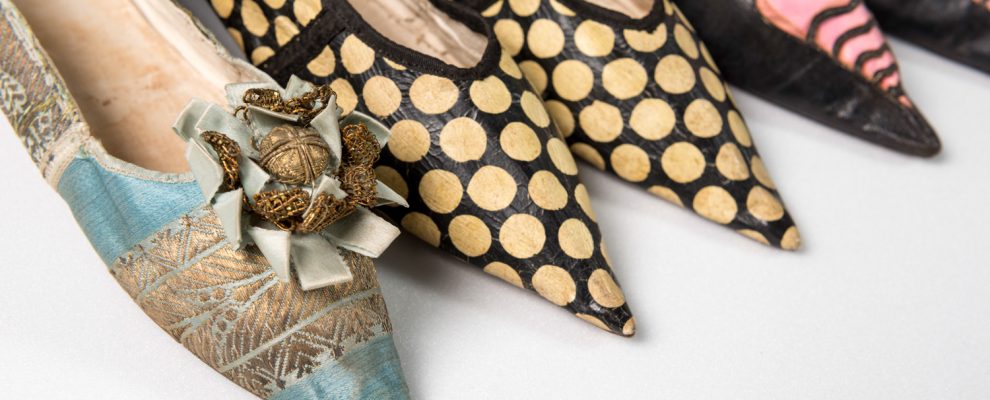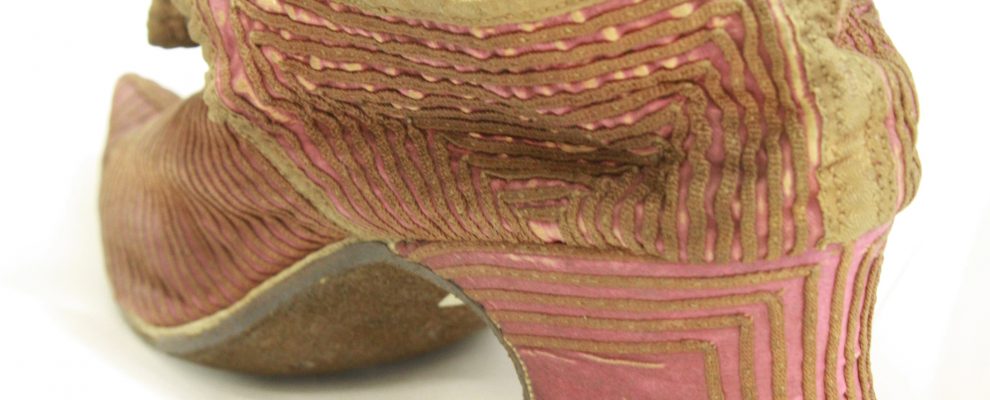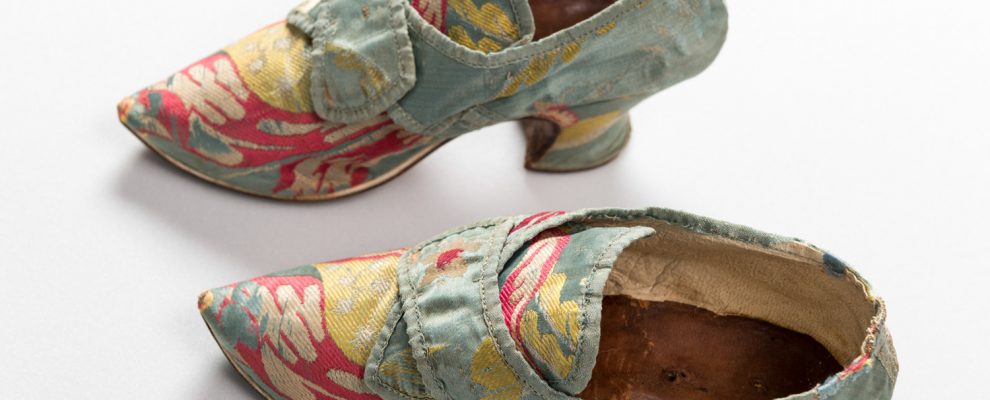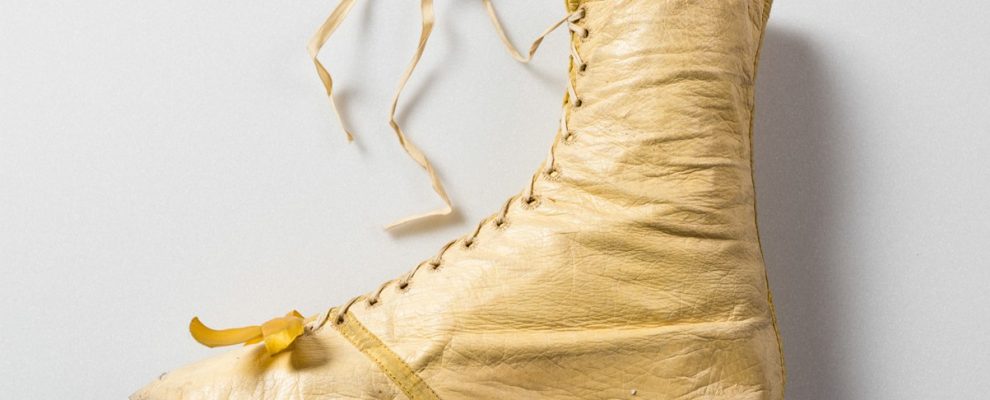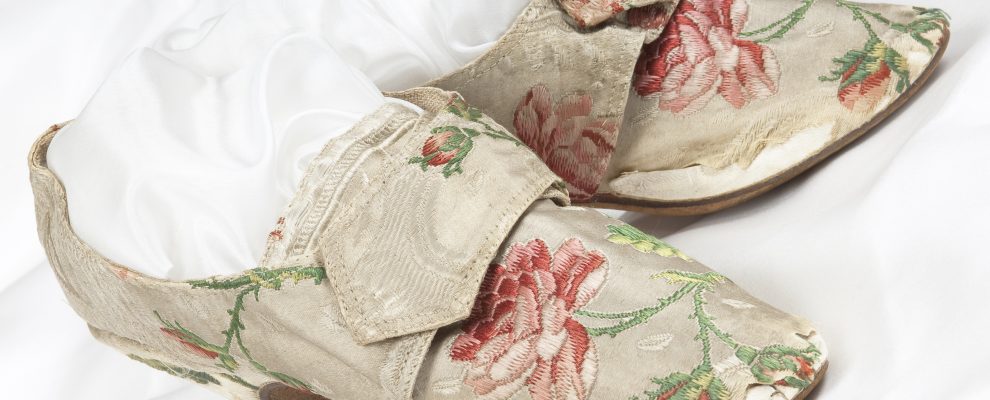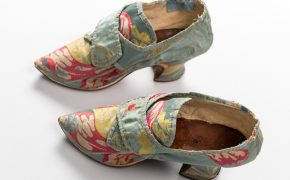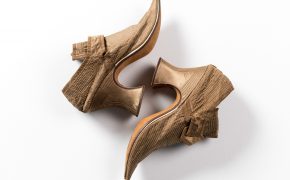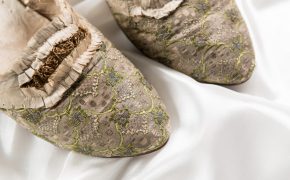A Century of Shoes
The Rise & Fall of the Georgian Heel
10 March – 26 June 2016
Walking in the footsteps of the Georgians
Fairfax House’s fourth exhibition of historic fashion spotlights arguably the most adored and coveted accessories of all… shoes. In this latest exhibition, we pay homage to the shoe and celebrates the Georgians’ love affair with ‘heels’.
A Century of Shoes: The Rise and Fall of the Georgian Heel showcases over 100 shoes from 100 years of fashion (1720-1820). From the fanciful footwear of the wealthiest to the functional mules of the down at heel, this new exhibition reveals the fashion and function of Georgian footwear and celebrates the visual splendour and dramatic forms of a century of shoes from the opulent and extravagant Georgian era. Shoes have been assembled from major shoe collections and some of the country’s most significant textile and costume museums to bring together an exhibition that showcases the great beauty, style, exquisite materials and craftsmanship of footwear from the long eighteenth century.
A Century of Shoes explores Georgian society’s addiction to fashionable footwear, and the wearing of high heels by both men and women. Charting the evolutions which took place in shoes design, the exhibition looks at how the heel rose and then fell both in popularity and size across the course of the century; rising to lofty heights in the first part of the eighteenth century and falling to the flat slippers and boots of the Regency period.
Boots, mules, slippers, and every form and fashion in footwear from this period is on display including one of the most iconic of all pieces of footwear – Wellington’s original boots. These boots went on to inspire the much-loved British favourite of footwear, ‘The Welly’. A modification of the 18th-century Hessian boot to Wellington’s own design, the earliest Wellington boot was made from soft yet hard-wearing calfskin leather with low cut, stacked heels and was cut to fit closely around the leg ending at mid-calf. This utilitarian yet fashionable boot quickly caught on with patriotic British gentlemen eager to emulate their war hero. Dubbed the Wellington the name has stuck ever since.
An array of exquisite ladies shoes (including examples worn by royalty) charts the evolution of the ‘high heel’ from 1720 through to 1820. The ‘Louis’ heel taking its name from the concaved high-heels designed for Louis XIV grew to great heights during the first part of the eighteenth century and became fashionable footwear for both ladies (including Louis XV’s mistress, Madame de Pompadour) and gentlemen. Made from beautiful silks, damasks and painted leather and decorated with embroidery, silver thread, bows and buckles, these shoes epitomise luxury.
Such shoes tell not only a story of fashion and society’s decadent passion for being beautifully shod, but also open a window onto the people that wore them, their tastes and even their feet! Shoes were the ultimate fashion statement and accessory. Often luxurious and flamboyant in design, shoes, then as they do today, reflected the style, personality, gender and class of the individual who wore them. But through use and wear, their shape and size, they also reveal something of the physical form of wearer who lived two to three hundred years ago – often confirming the smaller and daintier form of the Georgians when compared to society today.
Shoes also offer an insight into the types of activities for which that they were created and worn: gently promenading along York’s elegant New Walk by the river, dancing, attending elegant entertainments balls and assemblies. However, the height of the Georgian heel combined with the delicate fabrics from which shoes were produced, placed a form of restriction on female society, preventing the wearer from more unladylike or vigorous activities, and requiring her to acquire an elegance of deportment in how she moved and danced, taking only the smallest and graceful of steps. High heels, however, were not enough to ‘elevate’ society completely, and alongside these clogs, pattens or overshoes (also on display in the exhibition) were worn to raise and protect luxury shoes from the muddy and filthy streets of unpaved cities.
At the other end of the scale, A Century of Shoes also encompasses the dainty children’s and tiny babies’ shoes of the Georgian period, crafted with exceptional detail and such care on a miniature scale. In some cases, these shoes also offer an insight into one of the strangest customs of the period. A Century of Shoes delves into the world of concealed shoes and the strange practice of deliberating secreting worn shoes (often children’s or women’s) within homes – under floorboards, up chimneys, within walls – using them as protective devices to ward-off evil spirits.

